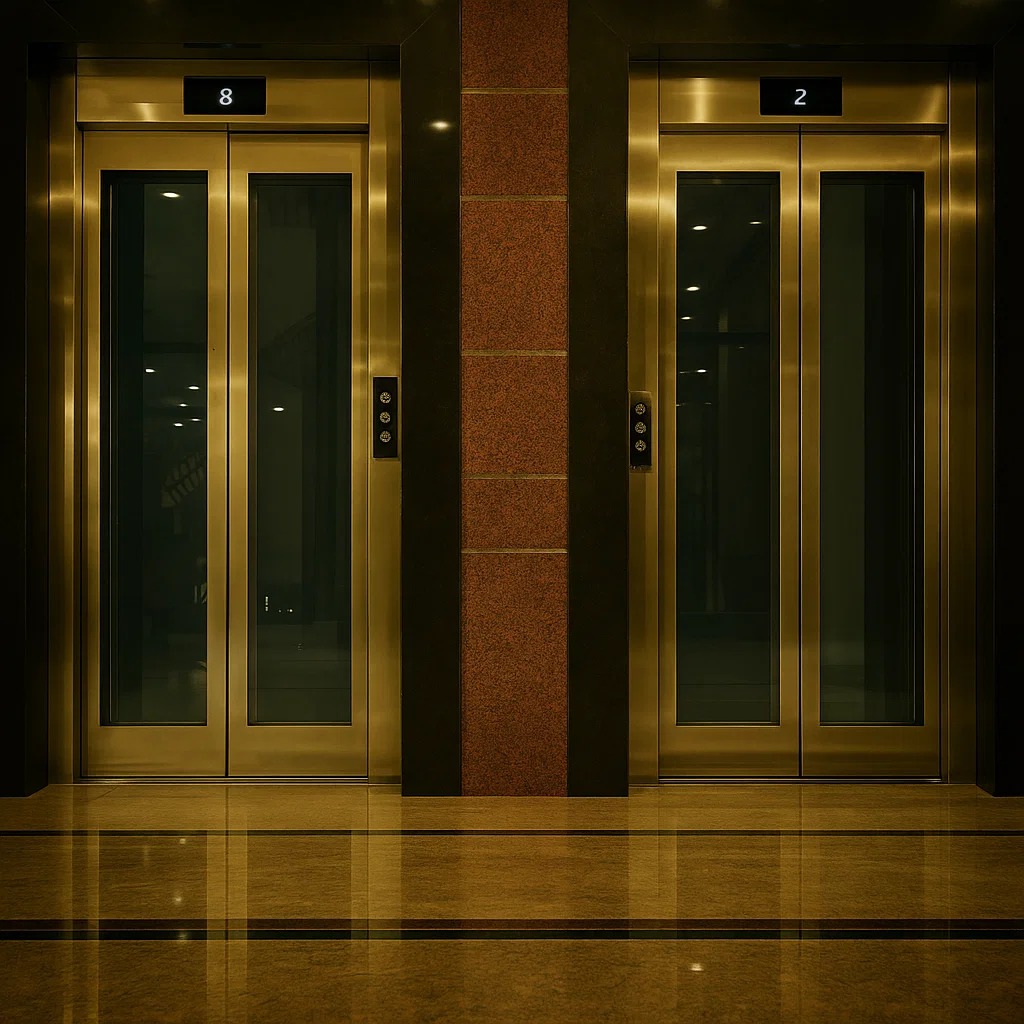In today’s competitive business landscape, organizations are focused on not only utility but also sustainability and efficiency. The trend toward smart infrastructure continues to grow in workplaces, retail centers, hospitals, and tall buildings with a concentration on comfort, safety, and cost savings. One of the most important parts of smart infrastructure are the commercial elevator solutions and energy-efficient HVAC systems. When these systems interact properly, they can help with building performance, energy savings, and occupant satisfaction.
This article looks at how commercial elevator solutions can be designed and installed to function effectively with energy-efficient HVAC systems, the role of commercial and residential HVAC services and maintenance, and the civil & electrical work required to ensure operational reliability.
The Connection Between Elevators and HVAC Systems
Commercial buildings rely heavily on indoor climate control and vertical transportation. Elevators allow access along with a high level of convenience, while HVAC systems will create an optimal level of indoor temperature and air quality. When either of those two systems are coordinated in the process of planning, this presents a business opportunity to reduce operational costs and improve operational efficiencies.
- Anytime elevators are in use, they generate heat, which then affects the indoor climate.
- HVAC systems need to work harder to make up for this heat and balance the temperatures indoors.
- By integrating your planning, you will eliminate the unnecessary load going into either system, which will then lower the cost to operate.
This is why designing a commercial elevator solution needs to be planned with the understanding of the interdependence of an optimized energy efficient HVAC system.
Key Benefits of Integrating Elevators with HVAC
1. Increased Energy Efficiency
Elevators with regenerative drives can convert excess energy they produce into power that can be reused. This minimizes the burden on the HVACs as it handles heat output while lowering energy expenses.
2. Improved Occupant Comfort
Occupants moving from floor to floor should not know the floor temperatures vary significantly. Commercial elevator solutions can integrate with HVAC seamlessly to maintain comfort in all areas of the building.
3. Increased Equipment Lifecycles
HVAC maintenance service spaces and preventive support of elevators minimizes the wear and tear on both systems.HVAC designed and maintained with elevators will run much more efficiently thereby extending their lifespan and reliability.
Role of Maintenance in Efficiency
Maintenance is the fundamental component of operational efficiency for commercial facilities. Without regular maintenance, even the most sophisticated systems may fail leading to wasted time and high repair costs.
Why is HVAC Maintenance Important?
- Regular inspections enhance a building’s indoor air quality and temperature control.
- Scheduled cleaning helps reduce energy waste.
- Preventative maintenance prevents expensive system failures from affecting scheduled operations.
When a facility combines HVAC maintenance services with elevator maintenance services, the business is less affected with getting to their preferred destination while maintaining comfort.
The Significance of Civil & Electrical Works
No commercial setup is complete without proper civil & electrical works. These foundational services ensure that elevators and HVAC systems operate safely and efficiently.
- Civil works include structural adjustments for elevator shafts, load-bearing considerations, and vibration control.
- Electrical works involve reliable wiring, power distribution, and energy optimization for both HVAC and elevators.
The quality of civil & electrical works directly affects the long-term performance of a building’s infrastructure. Poor execution can lead to increased energy consumption, safety risks, and frequent system malfunctions.
Advanced Features in Modern Commercial Elevator Solutions
Today’s commercial elevator solutions are more than just vertical transportation—they are intelligent systems designed for sustainability and comfort.
Smart Controls and Automation
- Energy-efficient standby modes reduce power usage.
- Intelligent scheduling minimizes wait times and traffic congestion.
Regenerative Drive Technology
- Converts excess kinetic energy into electricity.
- Reduces HVAC load by limiting heat output.
Integration with Building Management Systems (BMS)
- Elevators and HVAC can be monitored together.
- Data-driven adjustments optimize energy efficiency.
Why Businesses Should Invest in Integrated Systems
The growing focus on sustainability requires businesses to rethink their approach to infrastructure. Investing in integrated commercial elevator solutions, efficient HVAC setups, and reliable civil & electrical works offers numerous advantages:
- Cost Savings: Reduced energy consumption and fewer repair costs.
- Sustainability: Lower carbon footprint meets green building standards.
- User Experience: Comfortable, safe, and modern facilities enhance brand value.
Businesses that align these systems gain a competitive edge while meeting environmental regulations.

Best Practices for Implementation
When planning integration of elevators and HVAC systems, consider these best practices:
1. Get Experts Involved Early
Involve professionals who are experts in and experienced with commercial elevator systems and maintenance for your HVAC service and operations before planning your project. Getting the experts involved early in the project will lead to coordinated efforts and seamless integration of systems.
2. Focus on Preventive Care
Obtain regular service maintenance assessments for your elevators and HVAC systems. This prevents unwanted downtime and develops ongoing efficacies.
3. Invest in Quality Civil & Electrical Works
Taking shortcuts with civil and electrical works will more than likely create inefficiencies in the long run. It is advised to hire trained and licensed professionals for your civil and electrical works.
4. Opt for Technology
Select elevators with regenerative drives and HVAC systems that include smart sensors. HVAC systems that share data with your building management system will put your building even farther ahead in efficiency.
Future Directions in Commercial Buildings
The future of building systems lies with the seamless integration of building systems. Elevators will use energy more efficiently, HVAC systems will incorporate AI technology for predictive maintenance, and civil and electrical work will design for sustainability. Collectively, all three areas of technology will transform commercial buildings into healthy high-performance spaces.
Conclusion
In today’s commercial environment, energy efficiency and functionality work together towards energy efficient and functional operation. A business simply cannot overlook the wealth of commercial elevator solutions coupled with energy efficient HVAC systems. With investment in quality installations, trustworthy maintenance HVAC services and expert civil & electrical works businesses can create a sustainable, cost effective and comfortable environment for the occupants of the space. Colts Engineering LLP provide state of the art commercial elevator solutions and dependable HVAC & infrastructural support which will help you achieve positive efficiencies, safely and securely and with future-proofing capabilities of your corporate structure.
